Books
In Pictures: To Honor Franz Kafka’s Birthday, See His Drawings Once Hidden in a Swiss Bank Vault
Drawings by the literary legend have been published for the first time after a Kafka-esque journey.
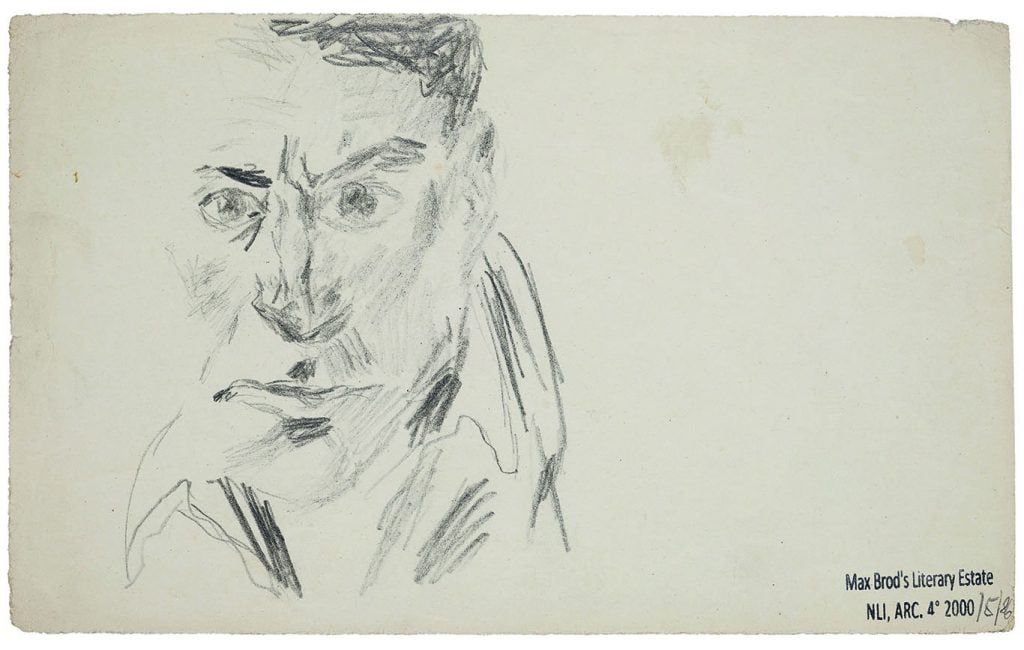
Drawings by the literary legend have been published for the first time after a Kafka-esque journey.

Vittoria Benzine

July 3 would have marked Franz Kafka’s 139th birthday. To this day, the literary legend’s name rings so ubiquitous that we use it as an adjective. He still has a few thrills in store. This spring, Yale University Press published “Franz Kafka: The Drawings,” a 368-page volume presenting hundreds of sketches by the writer for the very first time.
Much as Kafka maintained a double life between his office job and writing practice, his lifelong friend and eventual literary executor Max Brod also said he had a “double talent.” While studying at Charles University in Prague from 1901 to 1906, Kafka took drawing classes and attended art history lectures. He kept drawing throughout his brief but intense 40 years, yet this period was his most prolific.
“Franz Kafka: The Drawings” opens with the suitably Kafka-esque 80-year journey these drawings took just to reach the public. Before anything, they had to survive Kafka’s own acts of destruction. He was even harder on his artwork than his words, burning sketches if they didn’t please him. Fortunately, Kafka entrusted many drawings to Brod, himself an aspiring artist who carefully collected every piece his friend gave him.
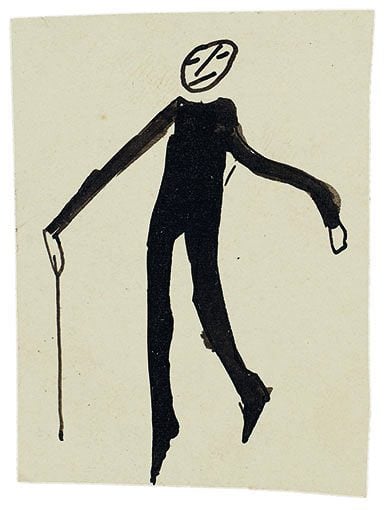
A figure cut out of the sketchbook of Franz Kafka (ca. 1901-07). The Literary Estate of Max Brod, National Library of Israel, Jerusalem. Photo: Ardon Bar Hama.
Brod kept Kafka’s drawings after the writer died from tuberculosis in 1924, even taking them with him when he fled the Nazi invasion of Czechoslovakia for Palestine. During the Suez Crisis in 1956, Brod’s archive traveled to a UBS safe in Zürich, where it remained trapped on a technicality.
When Brod died in 1968, he bequeathed the papers to his beloved secretary Ilse Hoffe. She held tight to her rights. On a 1981 visit to Israel, publisher Michael Krüger inquired about Kafka’s drawings. He learned that it cost 100,000 marks just to take a peek.
After Hoffe died in 2007, the National Library of Israel sued her heirs for the trove. The legal battle took about a decade. Ultimately, the library won its claim that Brod had instructed Hoffe to transfer his estate there. It also secured an agreement from the government in Zürich.
By late 2019, Kafka’s artistic oeuvre was finally free. Now, you can take a peek yourself for just $50.
Kafka is remembered today for his angst and brooding melancholy. These drawings offer a glimpse of his lighter side. There are candid self-portraits and studies of his loved ones that indicate a deep sensitivity to capturing emotions. Other figures, whether solemn or resolute, burst off the page with simple linework. “Franz Kafka: The Drawings” collects them all, with most images replicated at full scale.
“There is great mirth in these depictions of little people, created with so little ink and so few lines,” wrote the German novelist Daniel Kehlmann. “It’s hard to imagine the saintlike being who created these weightless drawings as an unhappy man.”
Below, see more drawings by the author of “The Trial” and “The Metamorphosis.” The hardcover volume “Franz Kafka: The Drawings” is available to purchase through Yale University Press for $50.
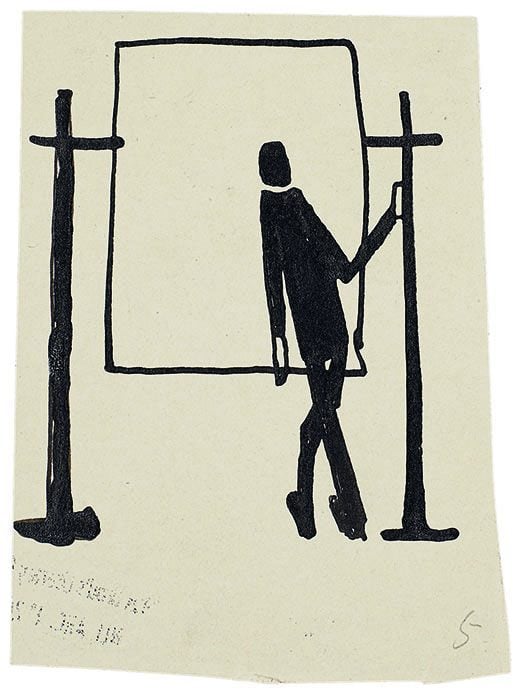
A figure cut out of the sketchbook of Franz Kafka (ca. 1901-07). The Literary Estate of Max Brod, National Library of Israel, Jerusalem. Photo: Ardon Bar Hama.
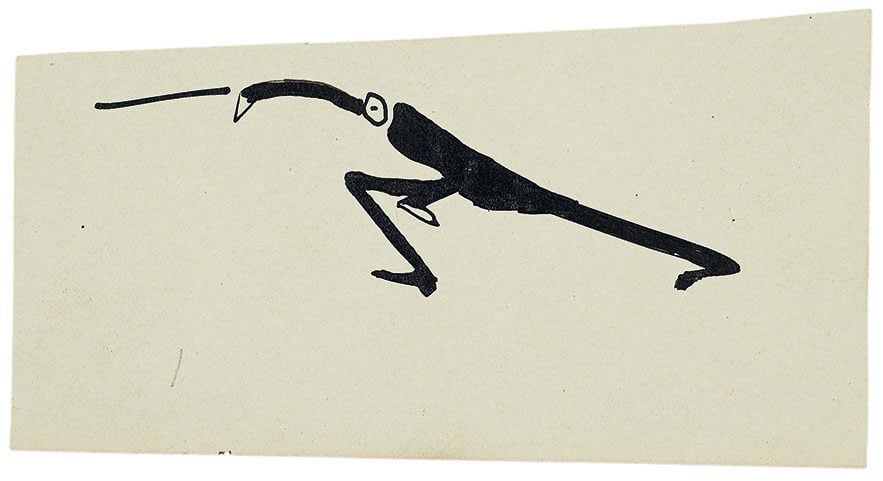
A figure cut out of the sketchbook of Franz Kafka (ca. 1901-07). The Literary Estate of Max Brod, National Library of Israel, Jerusalem. Photo: Ardon Bar Hama.
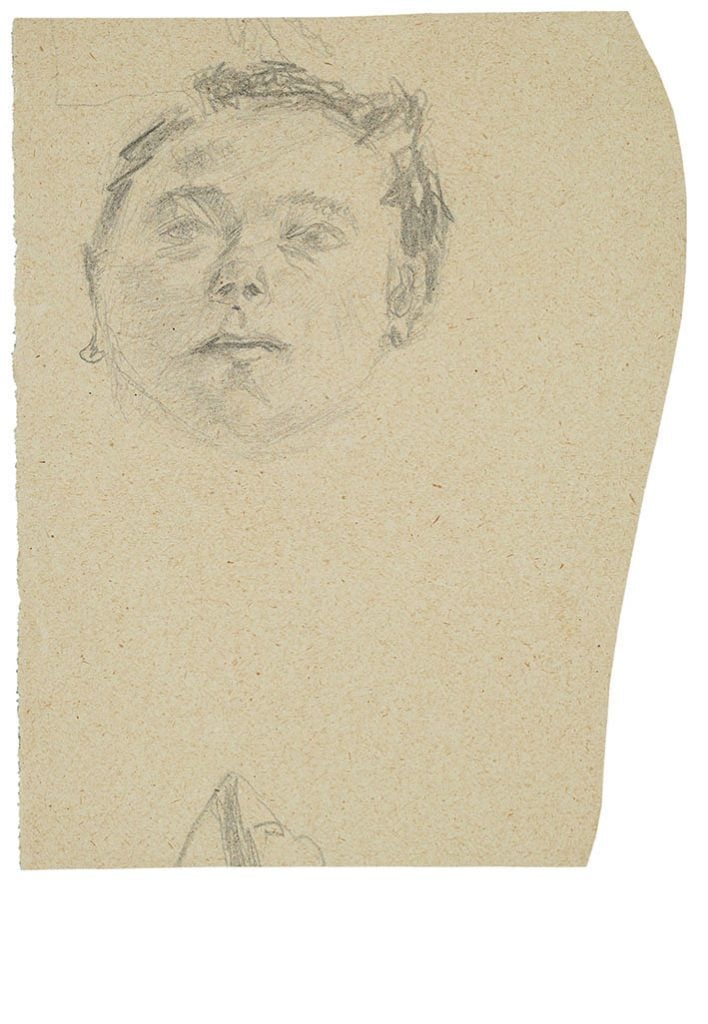
Franz Kafka, Standing figure, portrait (ca. 1901-07). The Literary Estate of Max Brod, National Library of Israel, Jerusalem. Photos: Ardon Bar Hama.
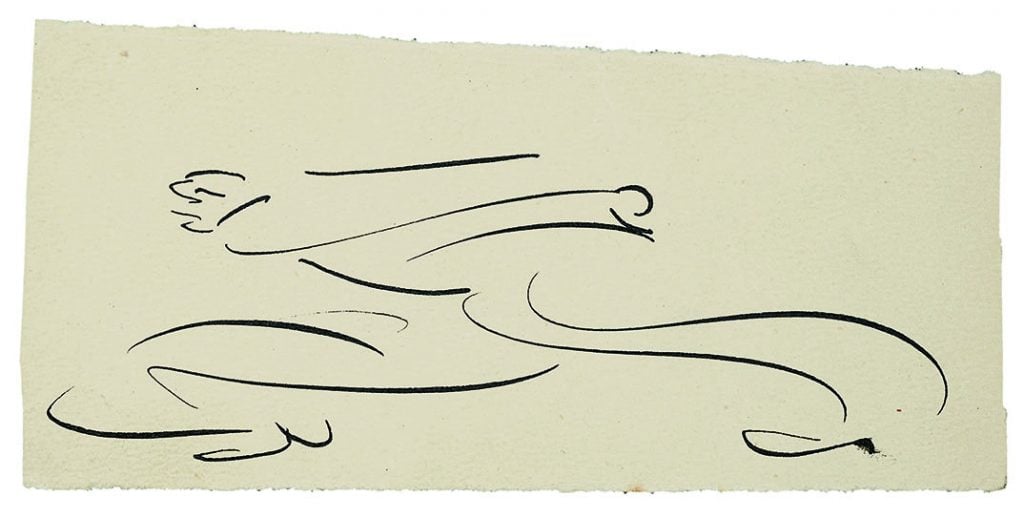
Franz Kafka, [From] two pages with several drawings (ca. 1901-07). The Literary Estate of Max Brod, National Library of Israel, Jerusalem. Photos: Ardon Bar Hama.
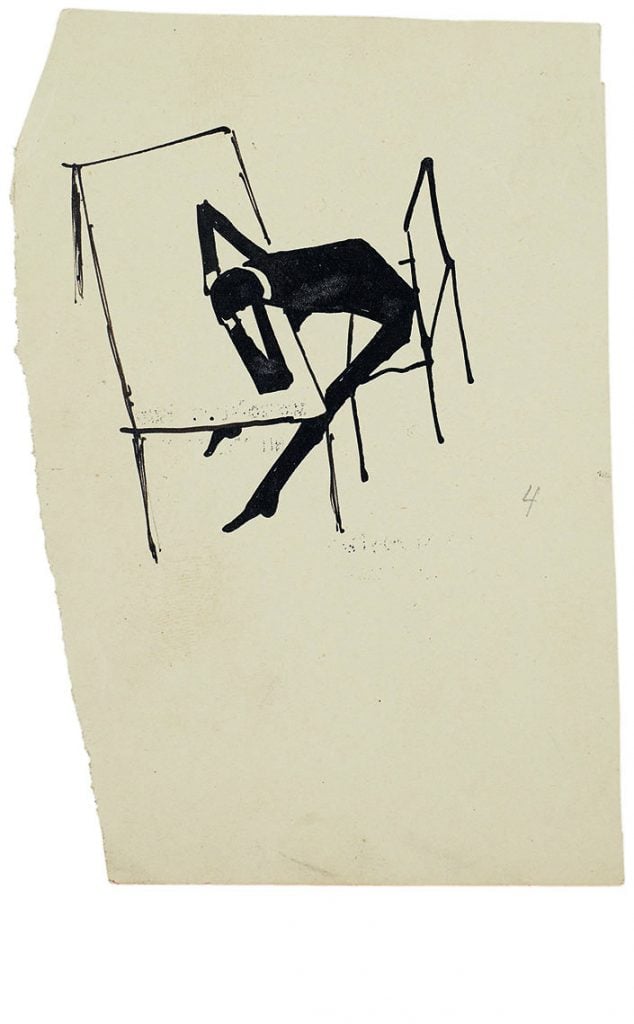
A figure cut out of the sketchbook of Franz Kafka (ca. 1901-07). The Literary Estate of Max Brod, National Library of Israel, Jerusalem. Photos: Ardon Bar Hama.
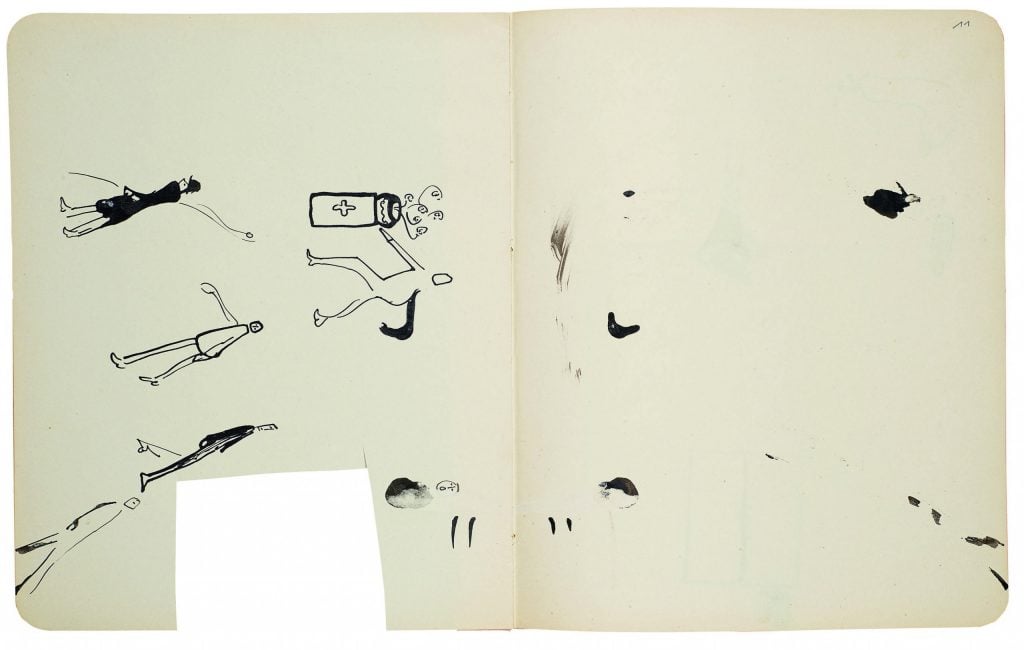
Pages in the sketchbook of Franz Kafka (ca. 1901-07). The Literary Estate of Max Brod, National Library of Israel, Jerusalem. Photo: Ardon Bar Hama.
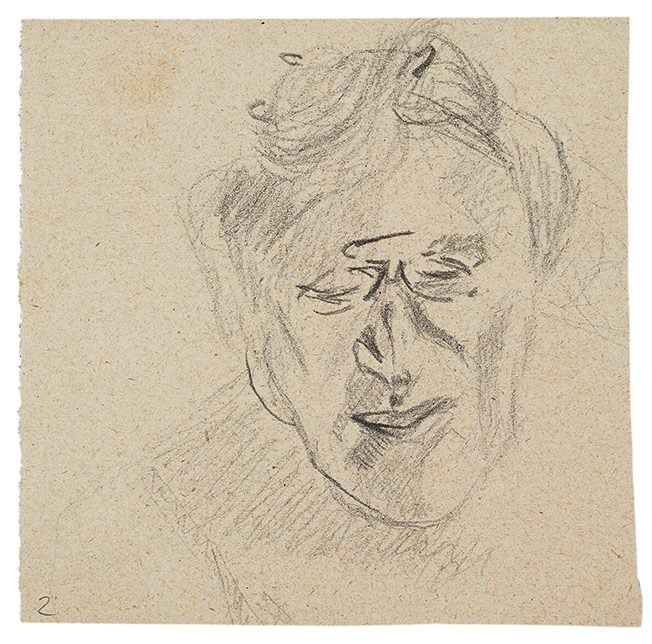
Franz Kafka, Portrait of Julie Kafka (ca. 1905-07 or slightly later). The Literary Estate of Max Brod, National Library of Israel, Jerusalem. Photos: Ardon Bar Hama.
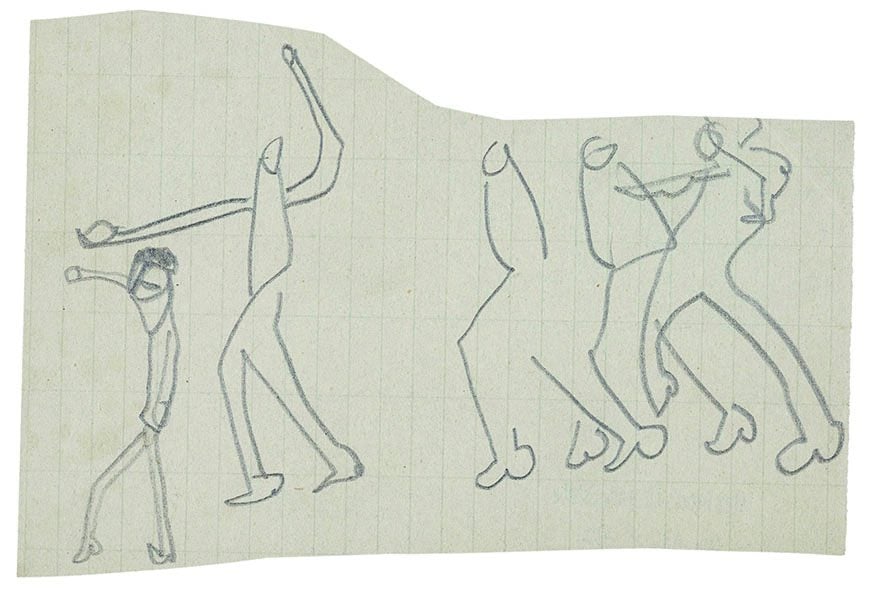
Franz Kafka, Mob (ca. 1901-07). The Literary Estate of Max Brod, National Library of Israel, Jerusalem. Photos: Ardon Bar Hama.